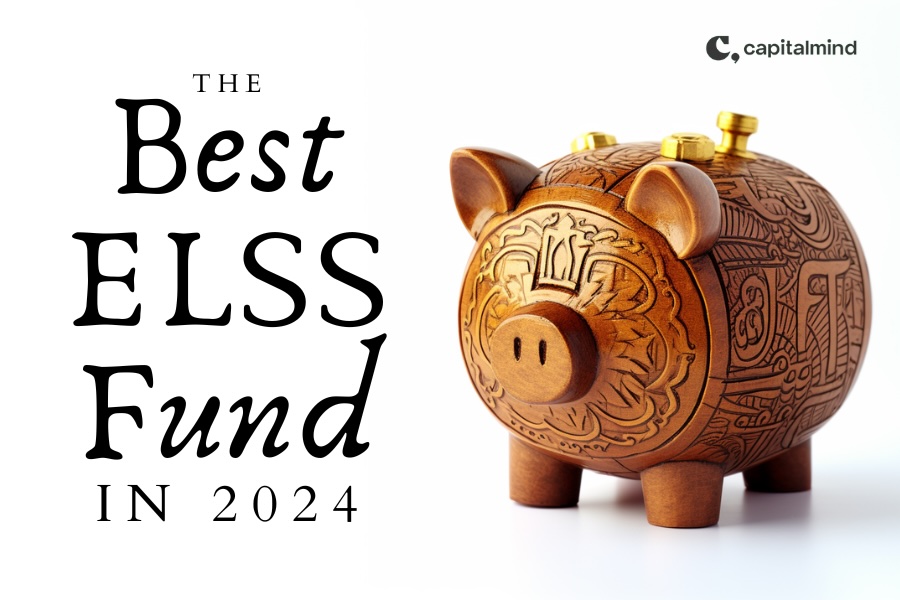Blockchain, genome sequencing, robotics, artificial intelligence, metaverse, and more herald the biggest revolution in economic history, and this fund is your chance to benefit from investing in the Dominators, Disruptors, and Enablers, in short, the “winners of tomorrow”. That’s the seductive pitch of the DSP Global Innovation Fund of Fund.
The slick presentation and shiny fund microsite remind you of the ARK Big Ideas 2022 deck. They make liberal use of the logos of Alphabet, Tesla, Netflix, and other superstar poster boys of technology-led disruption to drive home the point of the inevitability of the impact of technology on investment returns.
The resemblance to ARK and its disruption-theme brand is not incidental. The ARK Disruptive Innovation Fund is one of six (yes six) funds that the DSP Global Innovation Fund of Fund will own.
As far as narratives go, this is powerful stuff. Given a choice between owning “High R&D / Total Investment” companies and the other kind, what would you pick? Tesla or General Motors? Is it even a choice? Depends on who you are. A slide helpfully points out “High R&D / Total Investments” companies have grown 45x over the last six decades, compared to a paltry 12x for “Low R&D / Total Investments” companies.
Should you invest?
The NFO closes on 7th Feb. But a reminder, unlike stock IPOs, there is no advantage in hurrying to invest in Mutual Fund NFO periods since there is no possibility of a “listing pop”.
About the DSP Global Innovation Fund of Fund
A Fund of Fund, as the name, suggests, owns units of other funds instead of investing directly into underlying securities. A lot of international funds in India do this, acting as feeder funds for funds domiciled in the US. Most international funds in India, invest all of their assets into one fund. Like the DSP US Flexible Equity fund invests in the BlackRock Global Funds – US Flexible Equity Fund.
The DSP Global Innovation Fund of Funds invests in six foreign funds. The funds and their indicative weights as per the marketing presentation.
-
- Bluebox Global Technology Fund (20%)
- BGF World Technology (20%)
- Morgan Stanley US Insight Fund (15%)
- Nikko AM ARK Disruptive Innovation Fund (15%)
- ishares NASDAQ 100 UCITs ETF (15%)
- ishares Semiconductor ETF (15%)
The last two; ishares NASDAQ 100 UCITs ETF and ishares Semiconductor ETF accounting for 30% of the portfolio, are passive, the other four are active funds, including the headline-grabbing ARK flagship fund. The underlying theme across all the funds is technology businesses or industries already in the process of being deeply impacted by tech, which, if you think about it, is all industries today.
There’s nothing wrong with active funds or even allocating to multiple active funds as long as all those decisions offer the investor excess return i.e. return in excess of a passive, accessible index.
The chart shows how the constituent funds of the DSP Global Innovation FoF have done over the last five years.
Some heart-wrenching peaks and troughs in some of those funds. The green line is the Nasdaq100 ETF. The sad grey line trailing the rest by a distance is the NIFTY Total Returns Index.
Two of the funds do not yet have five-year track records: Nikko AM ARK Disruptive Innovation Fund started in Sep 2018, and Bluebox Global Fund in Feb 2020.
The DSP Global Innovation FoF will combine these six funds in weights between 20% and 15%. The combination is a swing for the fences kind of investment that can win big but also lose big as its hypothetical past performance shows.
Chart below shows the comparison of the Nasdaq100 ETF versus the theoretical composite that would form the DSP fund in question.
Overall the composite fund manages to outperform the Nasdaq100 over the last five years. But there’s a caveat. Two of the four active funds have not been around for all of those five years. The Nikko AM ARK Disruptive Innovation Fund was available starting Sept 2018 and the Bluebox Global Fund only started in Feb 2020. In our analysis, we’ve assumed the respective weights before the active funds’ inception get allocated to the passive funds i.e. 20% additional to the Nasdaq100 ETF and 15% to the Semiconductor ETF.
The chart below compares the drawdowns of the two.
Interestingly, both the Nasdaq and the composite fund had comparable falls in March 2020. However, the fall in what would have been the DSP Global Innovation Fund of Fund in the recent past has been much sharper than the Nasdaq100. If you refer to the first chart with individual NAV charts, you’ll see the reason for the sharper fall for the fund is primarily the ARK Disruptive Innovation Fund and the Morgan Stanley Insight Fund.
This comparison is done in Feb 2021 or Nov 2021 would have looked decisively in favour of the DSP Global Innovation Fund of Fund. But since then the constituent funds have fallen precipitously while the Nasdaq has had a more conventional correction.
The table below summarises the performance of the two.
Remember in this analysis the composite fund does not assume any additional costs. Also, a big assumption in the composite fund’s performance is that prior to Feb 2020, the 20% meant for the Bluebox Global Fund went to the Nasdaq100 ETF and prior to Sep 2018, the 15% Nikko AM ARK Disruptive Innovation fund allocation went to the ishares Semiconductor ETF. So, we should assume the fund’s volatility based on the last five years has been slightly understated.
The underlying funds swing for the fences. This could mean big up years but also big down years. The question really is, can you stomach volatility in the search of alpha? If the future plays out exactly like the past, and if your investment horizon is longer than a decade, it’s makes sense to invest in the higher-return fund.
But what if your own actions on entries and exits in this fund? Would you have extrapolated the performance in Feb 2021 and Nov 2021 into the future and added additional funds? If the honest answer is yes, then you’d be setting yourself up for disappointment.
If you invest, do so only if you’re prepared for higher volatility than the market and periods where your returns will trail the market, sometimes by a lot. If that is a problem, stick with a Nasdaq 100 index fund for your international allocation.
Added note: On 23rd Jan 2022, SEBI advised the AMC that the fund should only invest in overseas ETFs and not active funds in light of the $7Bn industry-level limit on international investments. Till this limit has been increased, the fund will invest 50% each into iShares PHLX Semiconductor ETF and the iShares Nasdaq100 UCITS ETF.
All our product review posts are independent and have no commercial relationship of any kind with AMCs or any other organization. Please do your own due diligence to determine the suitability of any funds mentioned here for your portfolio. Let us know what you think on twitter or slack.
Also Read some of our other Mutual Fund analysis:
The best tax-saving ELSS Mutual Fund for 2022
The best NIFTY Index Fund in 2021
Which is the best Mutual Fund App in India?
The best Active International Mutual Funds
Axis Global Equity Alpha Fund of Fund Reviewed
For immediate access to actionable investment insights: direct stock portfolios, premium research, and the Capitalmind community Join Capitalmind Premium.




